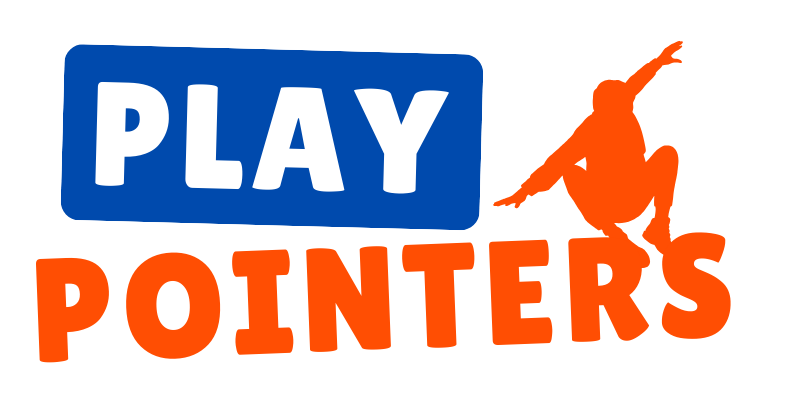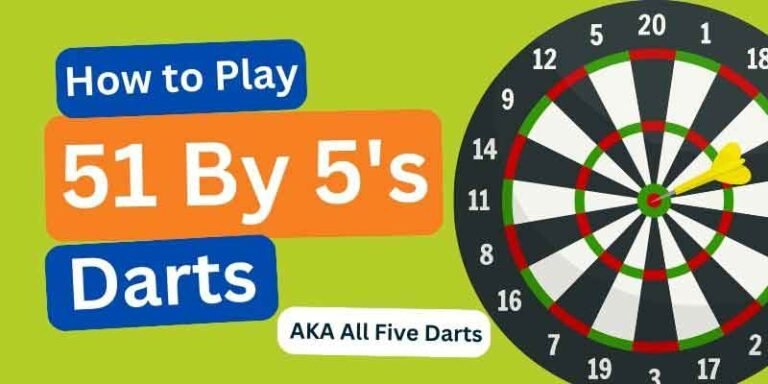How to Play 501 Darts?

Key Takeaways
- 501 darts is a race to the finish style game
- Each player starts on 501 points
- The first player to check out, is the winner
- To double out, players must hit a double with the last dart
- Players need to score as many points as possible to get to a finish quicker
What is the 501 Darts Game?
501 is the most popular game of darts among players, from the pros to the complete beginner.
It is a darts game that is played allover the world from your local bars, competitions, leagues, home game rooms all the way up to the professional level.
It’s likely, if you’ve watched darts on the television, you have seen it played out in action.
What is the Objective of 501 Darts?
When playing 501, the aim of the game, is to beat your opponent by being the first player to get zero.
It is very similar to 301 games, the only exception being the score to hit. Sometimes players of less experience and skill levels start on 301 as opposed to 501.
- To do this, players need to get as many points per round as they can
- The maximum amount of points during one round is 180
- The quickest anyone can get down to zero is in 9 darts, commonly known as a nine darter
How to Play 501 Darts?
When learning how to play 501 darts, the first thing you need to know is that players scores are counted DOWN in this game.
Everyone starts on a score of 501 and the amount of points thrown, during each round, is subtracted from the total score.
- Singles are worth the single value of the numbered segment
- Doubles are worth 2x the value of the single segment
- Triples are worth 3x the value of the single segment
- Outer ring bullseye is worth 25 points
- Inner ring bullseye is worth 50 points
Here’s a little example below
- Player A throws first and scores a total of 100 points (single 20, single 20 and triple 20)
- The 100 points scored is taken away and leaves the player on 401 on his next turn
Players throw 3 darts per round and alternate throws.
- So player A throws three darts and removes them from the board.
- Player B then steps up to the oche and takes their turn.
- Then it’s back to player A’s turn again
The first player to reach zero is the winner. However, players need to hit a double with the last dart to get to zero.
This is known as double-out.
If a player scores more than zero, or doesn’t hit the double with the last dart, both scenarios are a bust when you play darts in this format.
Who Starts The Game?
The most common way that players decide is by throwing closest to the bullseye.
Whoever gets closest to the red bullseye, starts the game.
You can also toss a coin to decide or throw one dart at the board, with your offhand and the highest score starts.
What Are The 501 Darts Rules?
The rules regarding 501 darts for the most part is usually the same anywhere it is played.
- Each player has three darts per round
- Players alternate turns throwing toward the dartboard
- Only darts that stick into the board are counted
- If a dart falls out of the board before being called, the dart doesn’t count as a score
- Points are deducted from the player’s running total score
- Scoring more than zero is a bust, and the score goes back to the score at the end of the previous round
- Players must finish on a double
- The first player to finish on a double and leave zero points wins the game
What Does It Mean to Double In During a Darts Game?
A slight variation to 501 exists, where players have to double in before they can start scoring.
It’s basically the reverse of finishing on a double, except you have to start on one as well.
This is known as ‘doubling in‘ and also ‘double in/double out’.
When a player doubles in, the double doesn’t actually count towards reducing their points score of 501.
The double is only used to start the game, and it’s not used in the professional game much.
- If you are a beginner, I would play the game without the handicap doubling in
- Unless you are fantastic at doubles, double in/double out may not be much fun
Technically speaking, a player can win the game while the other player remains on 501.
How to Score Games of 501 Darts?
In official games, there is usually a person who does the scoring, known as the chalker or the marker.
If you are playing at home with two other players, the third player that isn’t playing will usually be the chalker for the game.
To score games of 501, points are accumulative through the game and after each throw, the points are subtracted from the score the player had going into the round.
The easiest way to keep score in 501 is to:
- Separate each of the players totals with a line down the middle
- Place the name of each player across the top
- Write the scores remaining for each player after they have thrown their three darts down the scoreboard

Variations of 501 Darts
One of the most popular 501 dart variations, is the doubling in I was talking about above, however there are other variations you can play.
Different Scores to Hit
It can be a hard game to win, especially if you are playing with a more advanced player.
If one player is winning all the time, it’s not very fun for either player. You can mix things up and have each player start with a score that is different.
For instance:
The less skilled player starts on 301 points while the other one starts on 501 as usual
301 darts is actually another game, that is played nearly identical to 501, except the opening score (301) is different.
Skilled Player Doubles In
Again, if there is a gap in the players’ skill levels, you could also play double in for the experienced player, while the other player starts scoring from the first dart.
It’s another way to keep the game fun and offer more encouragement to the weaker player.
501 Darts Tips to Help Your Game
Plan Ahead
Learning how to play darts when a finish on a double is involved, will, or at least should, get you thinking about your route to a finish before you actually get to a double.
This allows you to get to a finish you are comfortable and confident with.
Even Numbers Are Better to Finish on Than Odd Numbers
Generally speaking, you should always try and get down to an even number on a finish. It means if you fail to hit a double, there is another shot at a double immediately.
For example,
- 32 (double 16) is one of the most popular finishes among players, because if the dart lands inside the wire, it leaves 16 (double 8)
- 8 is right next to 16 which makes things easier, but also provides an immediate shot at another double
- If you miss double 8, you have another chance at double 4, then 2 all the way down to double 1
Improve Your Counting
Most new players, are slow at counting to begin with.
Players don’t need to be mathematical geniuses to count fast, it comes from repetition of learning and memorizing checkouts and popular number combinations.
Improving your darts counting skills, sooner rather than later, will help you get better at darts in general but also help you finish quicker using fewer darts.
Doing the scoring for other players is a great way of learning to count quick in darts.






